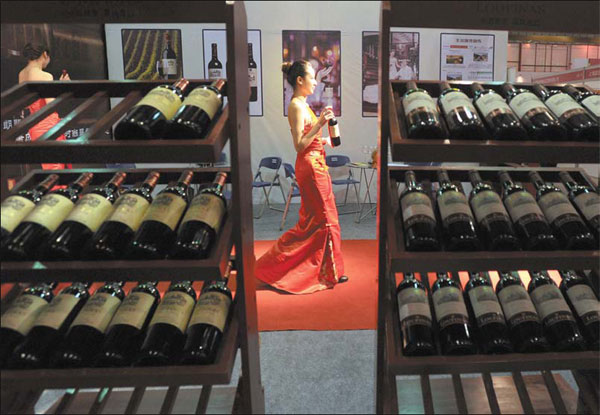Tastes maturing, but French wine still dominant
|
China is a top importer of Bordeaux wine, a trend that is expected to continue in the foreseeable future. Provided to China Daily |
French vintages, with their graceful taste and glamorous history, have long been a top preference for Chinese buyers.
But the other day at the luxurious Temple Restaurant in Beijing, wine lovers with the most discerning palates fell into a sudden quietness as bottles of premier wines from Napa Valley in the US were uncorked.
They were apparently stunned, and later claimed the day should have come before, when wine from the world's other appellations - big or small, old or new - alleviated their exclusive obsession with French wine.
"It takes a great deal of patience in this market because it's predominantly French.
"They came here much earlier but they are not necessarily the best," said Jay Schuppert, owner of Cuvaison Estate Wines in Napa Valley.
"We are bringing our wine to China to give greater exposure to what the qualities are."
Bordeaux is larger than Napa Valley, which means appellations like Napa cannot produce as much.
"So we are not looking for big growth, but for proper growth in a proper market, not only in the top hotels and restaurants, but also Chinese consumers.
"Chinese market is too important to be neglected," he said.
Wines from Australia and New Zealand are now trendy for buyers at YesMyWine, the largest online platform in China for merchants to sell imported wines.
"It had more than 20 percent of our 2012 sales volume, which is a big surge from the previous year," said Liu Jun, the site's CEO.
"Many consumers are willing to buy a bottle or two of New World wines out of curiosity rather than a routine choice due to brand loyalty," said Liu.
"But we should never overlook these attempts, because they may indicate the future trend."
According to Liu, there are two main reasons for challenges to the position of French wine.
One is that Chinese buyers are better cultivated in fine wine culture so they have more knowledge and look for high-quality wine without an exorbitant price.
The other is the widespread fake "French" vintages that hinder some consumer choice.
In the past two years, official agricultural delegations and vintner organizations from New Zealand, Australia, Argentina and the US have paid frequent visits to China looking for trade partners or distributors.
They hold press conferences, tasting events or help with charitable activities.
"It helps a lot in the promotion of their wine, some of it produced in small family owned wineries," said Liu.
But Liu admits French wine still has its overwhelming advantages.
"More than 60 percent of the imported wines in China are French.
"In the next few years, French wine will still account for more than a half of YesMyWine sales," he noted.
"The French wineries and traders know better how to distribute their wine in a standard way and we appreciate that professionalism.
"After all, our market is beyond comprehension."
China was still the top export client of Bordeaux wines last year, according to the latest industry data from the Bordeaux Wine Council that represents more than 10,000 producers and growers in the region.
Last year, 64 million liters of Bordeaux were imported to China, twice of the volume in Germany, according to the council. Some 23 percent of total wine exports are consumed by the region, the council said.
"Old World wines, especially French and Italian, will continue to enjoy an unquestioned status in China's wine investment market," said Liu.
xiaoxiangyi@chinadaily.com.cn



















